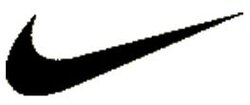I installed a new insert in an existing masonary chimney. Its an exterior chimney so I insulated and sealed the top of the flue with a top plate, sealed with HT silicone ect. There's no draft sneaking past it. The insert has a surrond that completely blocks off the old hearth so nothing is visible. I'm done. I'm happy. It heats like the dickens.
However, after investigating everyone else's installs I'm left feeling insecure. Was I supposed to block off the bottom of the flue? I could see if it was a large hearth and it was visible, or if you weren't going to seal the top or insulate the liner and wanted to prevent the liner from heating the air and creating a convection current. But is there anothe reason I'm missing? Please help me with my installation envy. Let me know its ok before I start ripping things apart again.
However, after investigating everyone else's installs I'm left feeling insecure. Was I supposed to block off the bottom of the flue? I could see if it was a large hearth and it was visible, or if you weren't going to seal the top or insulate the liner and wanted to prevent the liner from heating the air and creating a convection current. But is there anothe reason I'm missing? Please help me with my installation envy. Let me know its ok before I start ripping things apart again.


